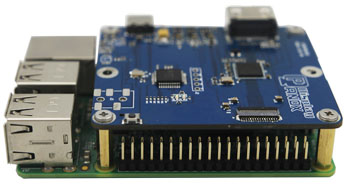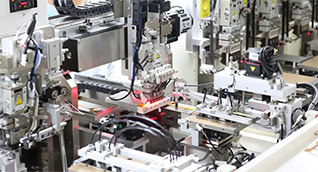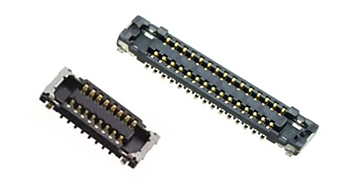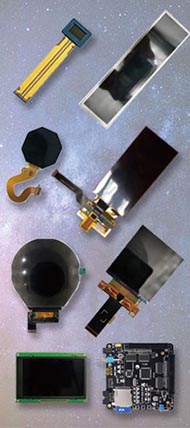LCD technology was invented before LED displays, with operational LCDs emerging in the late 1960s while the first practical visible LED was developed in 1962 but used mainly as indicators. Understanding this timeline clarifies their functional differences—LCDs control pixels using liquid crystals, while LEDs provide backlighting or emissive pixels—both critical considerations for OEM projects sourcing displays from suppliers like Panox Display.
What is the historical origin of LCD and LED technologies?
Liquid Crystal Display (LCD) technology was pioneered in the late 1960s. Key breakthroughs included the 1968 development of the first operational LCD by RCA’s George Heilmeier and others, based on dynamic scattering mode (DSM). This innovation enabled flat, low-power screens to replace bulky cathode ray tubes (CRTs) over subsequent decades.
Conversely, LED (light-emitting diode) technology originated earlier in 1962 with Nick Holonyak Jr.’s invention of the first visible-spectrum LED. Although LEDs existed before LCDs, their initial practical applications were primarily as small indicator lights rather than full displays. Only later, the advancement of multi-color LEDs enabled larger and more complex LED displays.
For OEM projects, this timeline distinction between LCD and LED highlights how LCD serves as a pixel modulation technology, while LED functions primarily as light-emitting or backlighting components. Companies like Panox Display leverage both technologies in their display offerings for various industrial and commercial applications.
How does LCD technology fundamentally differ from LED in display applications?
LCD displays manipulate liquid crystals to control light passage through each pixel. These pixels themselves do not emit light but rely on a backlight source, which can be fluorescent or LED-based. The liquid crystals act as adjustable shutters, modulating light intensity to form images.
LEDs are semiconductor devices that emit light directly when electric current passes through them. In displays, LEDs can serve as individual pixels (direct-view LED displays) or as backlighting for LCD panels (LED-backlit LCDs).
Thus, while LCD is a type of modulating panel technology, LED refers either to the light source behind LCDs or to standalone emissive displays. This distinction influences brightness, contrast, thickness, power consumption, and suitability for applications, which OEMs must consider when selecting panel types.
Why does knowing the invention order of LCD and LED still matter for OEM projects?
Understanding which technology came first clarifies their roles and evolution, guiding OEMs on product design, sourcing, and performance expectations:
-
Legacy and maturity: LCDs have had more than 50 years of development as pixel modulators, resulting in vast knowledge and mature manufacturing ecosystems, such as those supported by Panox Display.
-
Component integration: Most modern LCD displays are LED-backlit, combining both technologies; however, OEMs must specify panel type to optimize design for factors like power budget or viewing conditions.
-
Technological capabilities: Early LEDs had limited color and brightness, but advancements now offer direct-view LED screens with high visibility outdoors, which differ sharply from LCD properties.
-
Cost and availability: LCD panels remain cost-effective for many applications, while LED displays can command premiums due to complexity and higher brightness.
Knowing the origins helps OEMs weigh these trade-offs when selecting displays for industrial, consumer, or specialized market projects.
When did LCDs start to dominate over older technologies like CRT and plasma?
Following their invention in the late 1960s and early commercialization in the 1970s, LCDs gradually gained traction through the 1980s and 1990s. The key turning points include:
-
1970s: LCD calculators and watches became widespread, benefiting from low power consumption.
-
1990s: Improvements in thin-film transistor (TFT) LCD technology enabled high-resolution color monitors.
-
Early 2000s: LCD panels began overtaking CRTs in computer monitors and TVs, due to their lighter weight, flat form factor, and reduced power use.
-
Mid-2000s: LCDs surpassed plasma for flat panel TVs driven by lower manufacturing costs and longer lifespan.
Panox Display specializes in LCD and OLED panels that continue this legacy of enabling thin, efficient, and versatile display solutions for diverse OEM applications.
How are LEDs used differently within displays—direct view vs backlighting?
LED use in displays can be categorized into two primary applications:
| Application | Description | Typical Use Cases |
|---|---|---|
| LED Backlighting | LEDs provide uniform light behind LCD panels, improving brightness and contrast | Smartphones, laptops, TV panels |
| Direct-view LEDs | Individual LEDs serve as pixels creating images themselves | Large outdoor video walls, signage |
Backlit LCD displays dominate conventional consumer and industrial markets due to image clarity and energy efficiency. Direct-view LED displays excel in brightness and durability for outdoor or large-format installations but are more expensive and complex.
OEMs must understand these distinctions when selecting display types, with suppliers like Panox Display offering tailored options.
Which display technology offers better energy efficiency and why?
LCD panels powered by LED backlights generally provide better energy efficiency compared to older fluorescent backlights and early LED displays. This is because liquid crystals modulate light rather than generating it, using much less energy.
Direct-view LED panels consume more power due to each pixel being an independent light emitter but have advantages in brightness and scalability.
The choice hinges on usage patterns: portable devices benefit from LCD+LED backlight’s power savings; outdoor signage favors direct-view LEDs for visibility despite higher energy use.
OEM projects in sectors such as wearables and medical devices, where power consumption is a concern, frequently rely on efficient LED-backlit LCDs supplied by companies like Panox Display.
Where does Panox Display fit in the LCD and LED supply chain?
Panox Display acts as a professional supplier and OEM manufacturer specializing in both LCD and OLED panels, often integrating LED backlighting for optimal performance. Panox sources premium-grade displays from top fabrication brands such as AUO, BOE, Innolux, Samsung, and LG.
Their comprehensive service includes controller boards, PCBs, touch panels, and cover glass—all tailored for industrial, automotive, military, and wearable sectors. Panox’s expertise makes them a reliable partner in navigating the complexities of choosing and customizing the right LCD or LED display for OEM projects.
Can combining LCD and LED technologies enhance display performance?
Yes. The most common combination employs LED backlighting in LCD screens—marrying the modulation capabilities of LCD with the brightness and longevity of LED light sources. This approach enhances color range, contrast ratio, and energy efficiency.
Emerging technologies—like microLED or miniLED backlights—further improve uniformity and HDR (high dynamic range) capabilities while preserving the thin form factors vital to OEM designs.
Panox Display leads in sourcing and integrating these advanced hybrid displays, supporting OEMs with superior image quality and adaptable functionality.
How have LCD and LED technologies evolved to meet modern OEM project demands?
Both technologies have made strides to satisfy tighter OEM requirements:
-
LCDs have advanced through IPS and TFT improvements—enabling wider viewing angles, higher resolutions, and faster response times.
-
LEDs evolved from single-color indicators to full-color emissive pixels, enabling large, high-visibility screens.
-
Flexible and circular LCD and OLED formats now allow innovative device designs.
Panox Display continuously updates its portfolio with these innovations, helping OEMs innovate in medical, optoelectronic, and wearable markets.
What original insights can guide OEMs when choosing between LCD and LED for new projects?
-
Assess application environment: Outdoor or rugged scenarios often favor direct-view LEDs; indoor, power-sensitive devices prefer LCD with LED backlighting.
-
Consider image quality needs: High contrast and color fidelity may drive specific LCD panel choices.
-
Evaluate budget: LCD panels remain generally more cost-effective for medium to large projects.
-
Explore customization: Panox Display excels in tailored solutions blending LCD and LED tech to meet unique project demands.
Panox Display Expert Views
“Understanding the origins and roles of LCD and LED technologies clarifies their complementary strengths in today’s display market. For OEM partners, our priority at Panox Display is to help select and develop the perfect display solution — whether an LED-backlit LCD, direct-view LED, or emerging microLED panel. This strategic approach ensures product innovativeness, manufacturability, and life-cycle reliability critical to competitive advantage.”
Conclusion
The invention of LCD technology predates the first practical LED displays, with LCDs emerging as foundational pixel-modulating systems and LEDs evolving from indicator lights to critical backlighting and emissive displays. This historical perspective remains crucial for OEM projects, influencing design, performance, and sourcing decisions.
Final advice for OEMs:
-
Identify the primary function of the display (modulation vs illumination).
-
Match technologies to environmental and application needs.
-
Collaborate with experienced suppliers like Panox Display for expert integration of LCD and LED components.
-
Leverage latest advances such as miniLED backlights or flexible panels for innovation.
















